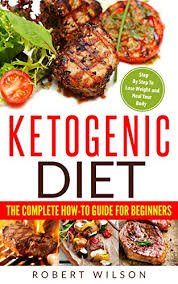What is the Ketogenic Diet? The keto diet is well known for being a low carb diet, where the body produces ketones in the liver to be used as energy. Since the glucose is being used as a primary energy, your fats are not needed and are therefore stored. Typically on a normal, higher carbohydrate diet, the body will use glucose as the main form of energy. By lowering the intake of carbs, the body is induced into a state known as ketosis.

Ketosis is a natural process the body initiates to help us survive when food intake is low. During this state, we produce ketones, which are produced from the breakdown of fats in the liver.
The end goal of a properly maintained keto diet is to force your body into this metabolic state. We don’t do this through starvation of calories but starvation of carbohydrates.
Our bodies are incredibly adaptive to what you put into it – when you overload it with fats and take away carbohydrates, it will begin to burn ketones as the primary energy source. Optimal ketone levels offer many health, weight loss, physical and mental performance benefits.
How Does The Ketogenic Diet Work
Keto Diet works by changing the way the body turns food into energy. Typically, during digestion, we break down carbohydrates — like those found in the verboten foods above — into molecules of fructose, galactose, and glucose, the last of which serves as the body’s primary source of energy. When the body can’t draw it from carbohydrates — either because they’ve been cut out of the diet or because a person hasn’t eaten for a long time — it looks for other forms of energy. The keto diet deliberately places the body in a state of ketosis, where fat is released from cells and turned into ketones, the body’s plan B for energy production.
Benefits Of A Ketogenic Diet
- Aids in weight loss
- Reduces acne
- Reduces risk of cancer
- Improves heart health
- Protects brain functioning
- Potentially reduces seizures
- Improves PCOS health
- Risks and complications
- Takeaway
How To Eat On A Ketogenic Diet To Reach Ketosis
So how exactly do you get into ketosis? Here’s how it works:
- Consumption of glucose from carbohydrate foods — grains, starchy vegetables, fruit, etc. — is cut way down.
- This forces your body to find an alternative fuel source: fat (think avocados, coconut oil, salmon).
- Meanwhile, in the absence of glucose, the body also starts to burn fat and produces ketones instead.
- Once ketone levels in the blood rise to a certain point, you enter into a state of ketosis.
- This state of high ketone levels results in quick and consistent weight loss until you reach a healthy, stable body weight.
Wondering how many carb foods you can eat and still be “in ketosis”? The traditional ketogenic diet created for those with epilepsy consisted of getting about 75 percent of calories from sources of fat (such as oils or fattier cuts of meat), 5 percent from carbohydrates and 20 percent from protein. For most people a less strict ketogenic diet (what I call a “modified keto diet”) can still help promote weight loss in a safe, and often very fast, way.
In order to transition and remain in ketosis, aiming for about 30–50 net grams is typically the recommended amount of total carbs to start with. This is considered a more moderate or flexible approach but can be less overwhelming to begin with. Once you’re more accustomed to this way of eating, you can choose to lower carbs even more if you’d like (perhaps only from time to time), down to about 20 grams of net carbs daily. This is considered the standard, “strict” amount that many keto dieters aim to adhere to for best results, but remember that everyone is a bit different.
